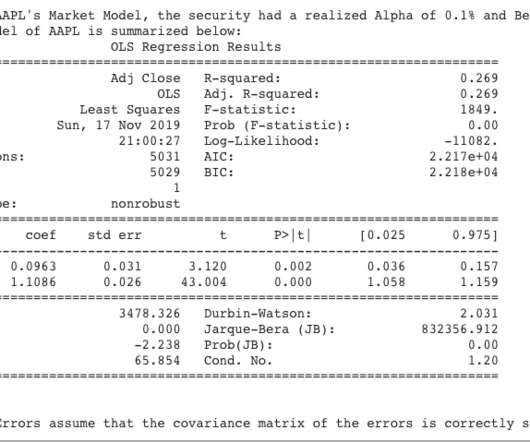Humans-in-the-loop forecasting: integrating data science and business planning
The Unofficial Google Data Science Blog
DECEMBER 4, 2019
This classification is based on the purpose, horizon, update frequency and uncertainty of the forecast. A single model may also not shed light on the uncertainty range we actually face. These characteristics of the problem drive the forecasting approaches.













Let's personalize your content